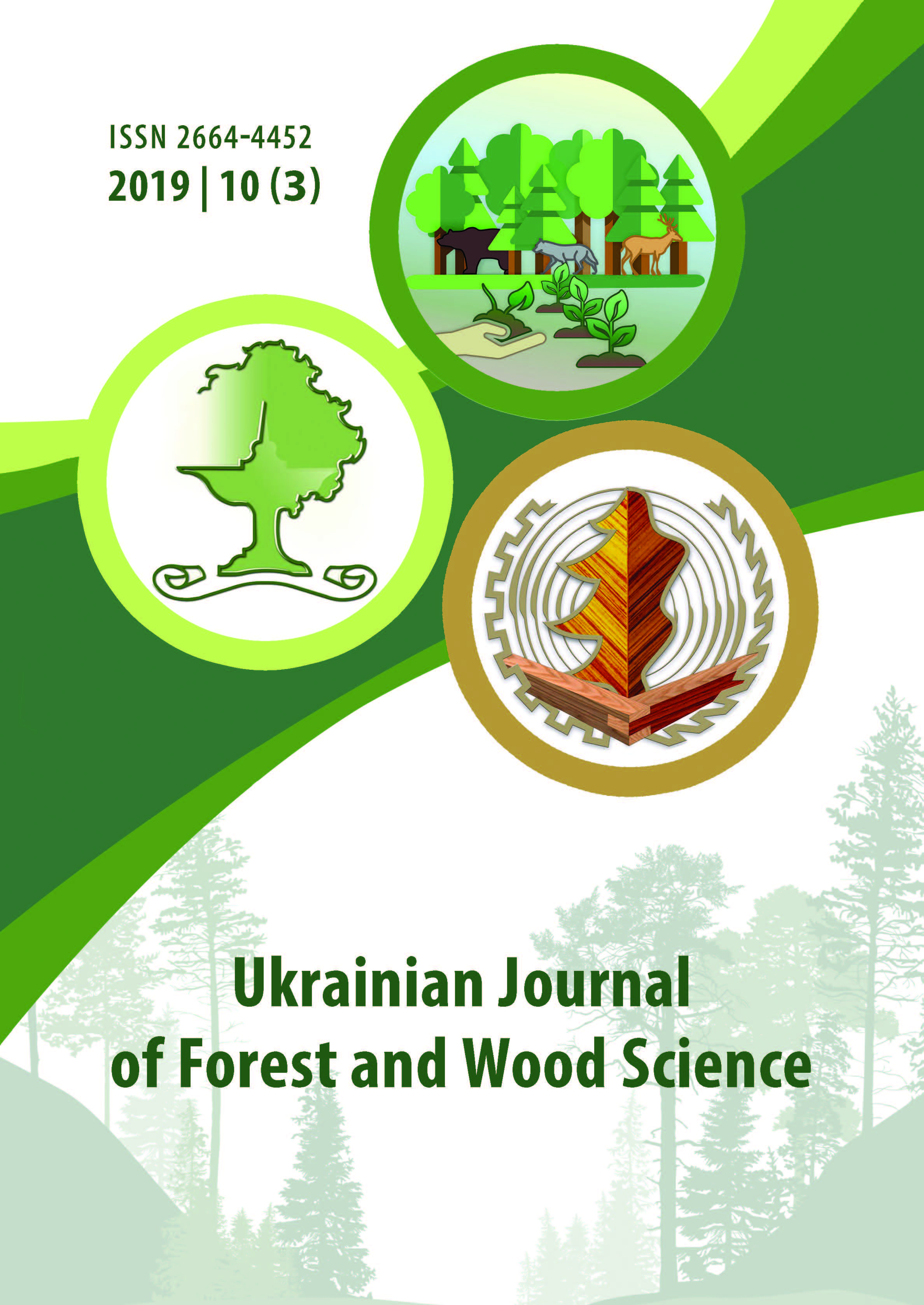Phytocompositional design of traditional folk holidays
DOI:
https://doi.org/10.31548/forest2019.03.086Abstract
The importance of plants in the design of Ukrainian folk holidays is considered in this article. Today, the revival of traditions and ceremonies, which have long been formed by our ancestors, are quite actual.
The purpose of the study is to determine the range of plants suitable for traditional Ukrainian holidays, to analyze the values of plant symbols and their coloristics, to submit project proposals for the formation of phytocomposition elements for the designation of the Holy Trinity. The flower is closely linked with natural cycles and calendar rituals, and its origins date back a long time ago. Stacking floral compositions is a special kind of creative activity, based on the artistic application of mostly natural raw materials. Folk floral compositions, involved in the rites of the calendar cycle, were in the home only a certain period, customary, but renewed the same time each year, maintaining the constancy of forms. The flower was and remains a means of separating the holiday from ordinary, emphasizes the special feature of the holiday, creates a solemnity. In order to apply theoretical knowledge in practice, the holiday of the summer period - the holiday of the Holy Trinity - was chosen. It was held at the National Museum of Folk Architecture and Life of Ukraine (Kyiv). Participants of the festival were students of the National University of Life and Environmental Sciences of Ukraine. Proposals for designing the day of the Holy Trinity were aimed at preserving the traditional range of plants, which has been used since ancient times. During the work model phytocompositions were formed that are inherent to this holiday. When they were created, the values of the symbolic plants were taken into account and the corresponding coloring was respected. Promising is the popularization and recognition of the uniqueness of the floral phenomenon in order to enrich the fund of Ukrainian culture.
Keywords: plant-symbols, flowering, coloring, traditions.
References
Voropay, O. ( 2009). The customs of our people: an ethnographic essay. Kyiv: Veles [in Russian].
Itten, J. (2013). The Art of color. Moscow: D. Aronov. [in Russian].
My dear is Ukraine. Holidays, traditions, customs, rites, signs and beliefs of the Ukrainian people. (2012). Donetsk: BAO [in Ukrainian].
Borisenko,V. K. (2000). Traditions and livelihoods of the ethnos: on the materials of the festive ceremonial culture of Ukrainians. Kyiv: Univers [in Ukrainian].
Chorna, G. A. (1993). The Art of Floral Composition. Methodical recommendations for students and teachers. Uman: UDPU.
Plants in the lives of Ukrainians. Historical aspect. (2008). Your Garden. Retrieved from http://www.vashsad.ua [in Russian].
We are Ukraine! (2014). Folk calendar. Retrieved from https://we.org.ua [in Ukrainian].
Downloads
Published
Issue
Section
License
Relationship between right holders and users shall be governed by the terms of the license Creative Commons Attribution – non-commercial – Distribution On Same Conditions 4.0 international (CC BY-NC-SA 4.0):https://creativecommons.org/licenses/by-nc-sa/4.0/deed.uk
Authors who publish with this journal agree to the following terms:
- Authors retain copyright and grant the journal right of first publication with the work simultaneously licensed under a Creative Commons Attribution License that allows others to share the work with an acknowledgement of the work's authorship and initial publication in this journal.
- Authors are able to enter into separate, additional contractual arrangements for the non-exclusive distribution of the journal's published version of the work (e.g., post it to an institutional repository or publish it in a book), with an acknowledgement of its initial publication in this journal.
- Authors are permitted and encouraged to post their work online (e.g., in institutional repositories or on their website) prior to and during the submission process, as it can lead to productive exchanges, as well as earlier and greater citation of published work (See The Effect of Open Access).

